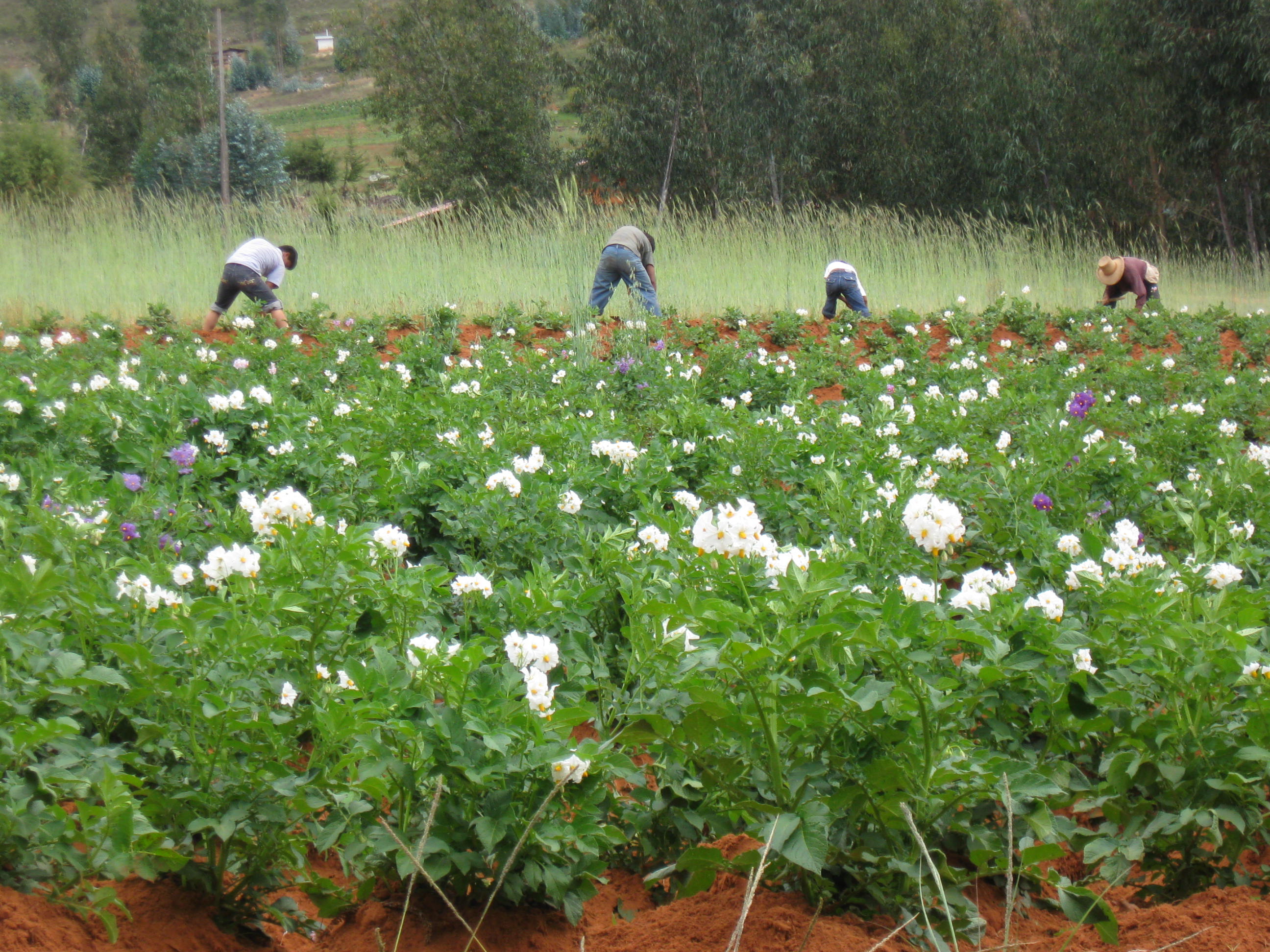Potatoes are generally propagated vegetatively, by planting tubers. In English, these tubers used for planting are, unfortunately, referred to as seed, which they obviously aren’t, at least not in the botanical sense. Potato breeders use sexual reproduction and the resulting real seeds (extracted from the tomato-like potato fruits) to generate new varieties. The fabled potato diversity of the Andes probably originated from seeds arising from spontaneous crosses among landraces and with their wild relatives, and alert farmers that kept some of the offspring occurring in their fields. But when and where were Andean potato varieties formed? And is this type of evolution still going on?
Marc Ghislain and colleagues ((M. Ghislain, J. D. Montenegro, H. Juarez, M. del Rosario Herrera, 2014. Ex-post analysis of landraces sympatric to a commercial variety in the center of origin of the potato failed to detect gene flow. Transgenic Research. DOI 10.1007/s11248-014-9854-4)) took advantage of a natural experiment in Peru to investigate whether new varieties have arisen from crosses between ‘Yungay’, and other varieties. Yungay ((Named after a town covered by a landslide in 1970.)) is one of the varieties of the famous Peruvian potato researcher Carlos Ochoa, produced by crossing native and exotic potatoes (from Europe, the USA, and Chiloe). Because it is genetically rather distinct from native Peruvian varieties (here is its pedigree), Ghislain and colleagues were able to use genetic markers (SSRs, in fact) to determine if a given potato variety in a farmer’s field might be an offspring of Yungay.
They looked at the DNA of 1771 leaf samples from more than 400 potato varieties growing in areas where Yungay is also grown. None of the potatoes sampled could plausibly be identified as a descendant of Yungay.
The authors’ motive was to find out whether transgenes from genetically modified potatoes might ‘pollute’ native diversity. I am more interested in the question of whether farmers are still finding, keeping and spreading new varieties from spontaneous seedlings. That would seem likely, but there appears to be no good evidence that they do so. We know that hybridization among potato cultivars, and with wild species, occurs under field conditions, but what happens to the offspring? Ghislain and his colleagues suggest that hybrids may not be adapted, and thus die off, citing research carried out in the rather unforgiving climate of Puno, and that farmers discard hybrids because they prize the quality of native varieties. But I am not convinced by that argument. Clearly, many hybrids will not make the cut, as in any breeding program, but some novelty must surely be of interest to local farmers, as it obviously has been in the past.
Is keeping new potato varieties a cultural practice that has been lost? And are most current native potato varieties therefore old, perhaps very old? Or is the process still going on, perhaps even at a similar rate as before, but the chance of detecting it is small? I wonder if there is some sort of clock that can be used to measure how old a variety is. After all, a variety is really an individual clonally propagated plant. And some potato varieties are thus of course much larger organisms than those molds that occasionally hit the headlines; each year there are about 10,000 ha of Russet Burbank in the USA alone.
Unless there is simply something wrong with Yungay’s offspring (which would make it a bad variety to use for this type of research), my guess is that there are hybrids with Yungay out there, but not many, and that they are just very hard to find. Only very few novel varieties may be good enough to spread beyond a farm to a much larger area, such that we are likely to detect them. But a transgene hybrid could have better odds than most.


My PhD research on potatoes was carried out in Peru. I was looking at the origin and evolution of triploid potatoes, Solanum x chaucha. The crossability studied I made indicated that although the frequency of triploids from 4x x 2x crosses was low, they were formed consistently across a wide range of parental genotypes. And such natural hybridization must occur since triploids are widely distributed in farmers’ fields. And the studies I made in Cuyo Cuyo also described how tubers from seedlings would be ‘introduced’ into teh suite of varieties which a farmer might grow.